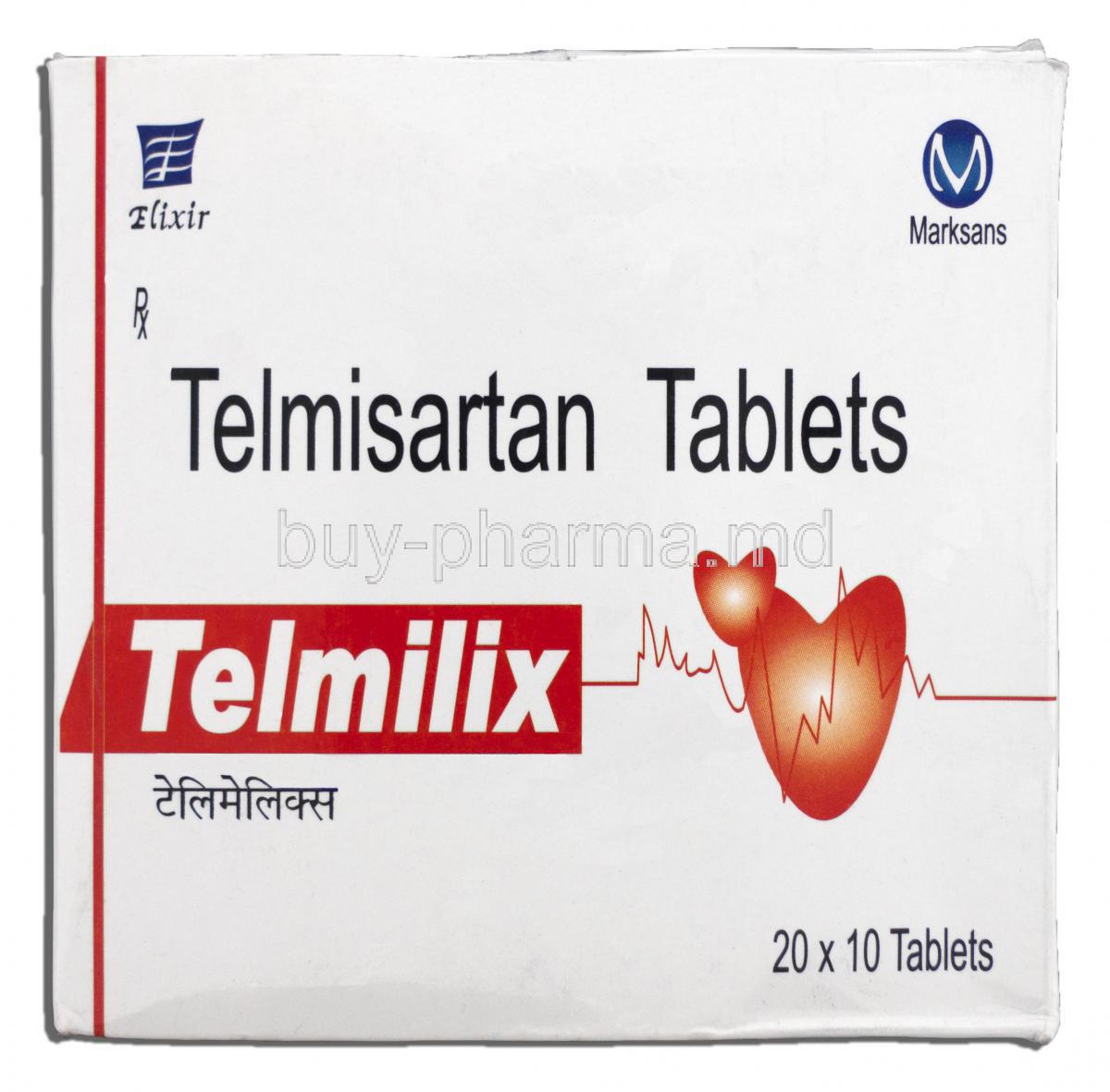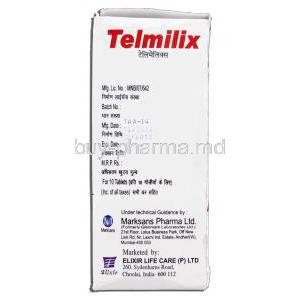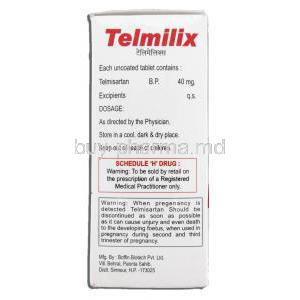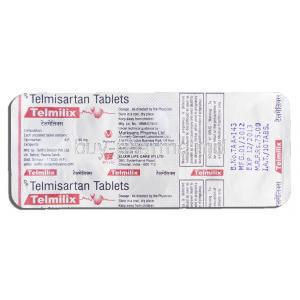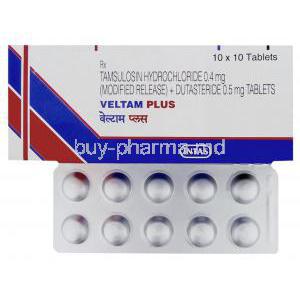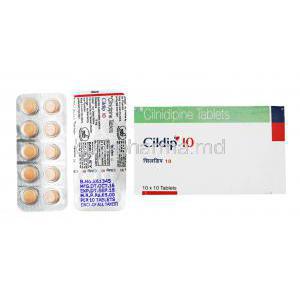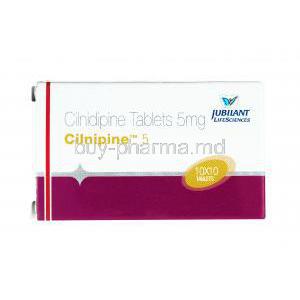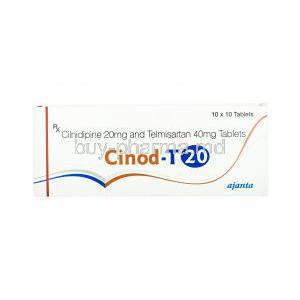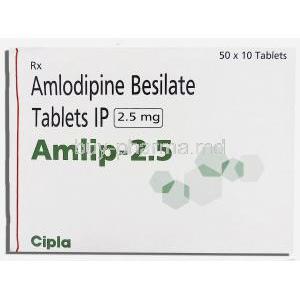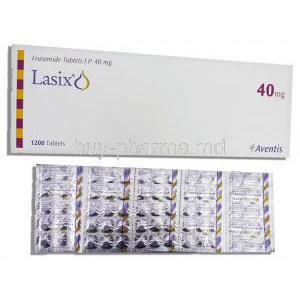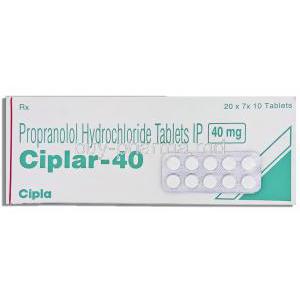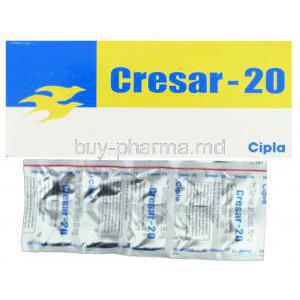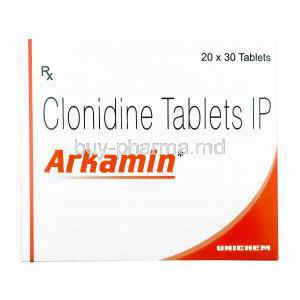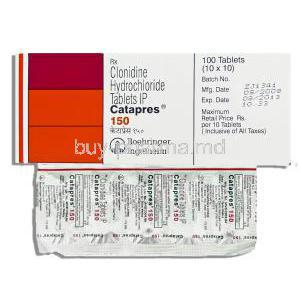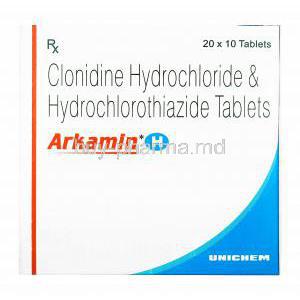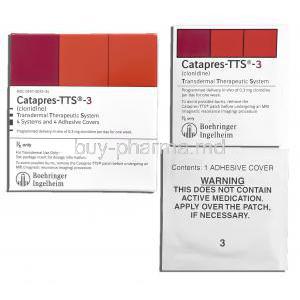Introduction to Telmilix (Telmisartan)
Telmilix, containing the active pharmaceutical ingredient Telmisartan, belongs to the class of medications known as angiotensin II receptor blockers (ARBs). It is primarily prescribed to regulate elevated blood pressure, thereby lowering the risk of cardiovascular complications. By addressing a root mechanism of hypertension, Telmilix supports long-term vascular health and organ protection.
Overview of Telmilix as an Angiotensin II Receptor Blocker (ARB)
ARBs function by selectively blocking the angiotensin II type 1 receptor. Telmilix, as an ARB, diminishes vasoconstriction and aldosterone-mediated sodium retention. This leads to an improvement in vascular compliance and stabilization of blood pressure.
Therapeutic Classification and Significance in Cardiovascular Health
Telmilix is classified under antihypertensive therapy. Its significance extends beyond mere blood pressure reduction, offering cardioprotective benefits such as:
- Lowering the incidence of stroke
- Reducing myocardial infarction risk
- Preserving kidney function in susceptible patients
Comparison with Other ARBs in the Market
Compared with alternatives like losartan or valsartan, Telmisartan has a prolonged half-life, permitting once-daily administration and providing 24-hour blood pressure control. It is also noted for favorable outcomes in metabolic conditions compared to other ARBs.
Composition and Formulation
Active Ingredient: Telmisartan
The principal component is Telmisartan, a potent and selective ARB.
Available Strengths and Dosage Forms
Telmilix is supplied in tablet form with varying strengths such as 20 mg, 40 mg, and 80 mg. Fixed-dose combinations with hydrochlorothiazide are also available for enhanced antihypertensive efficacy.
Inactive Ingredients and Excipients
Excipients include stabilizers, binders, and fillers such as lactose monohydrate, sodium hydroxide, and magnesium stearate. These inactive components ensure stability, palatability, and optimal absorption.
Mechanism of Action: How Telmisartan Works
Blockade of Angiotensin II Type 1 (AT1) Receptors
Telmisartan binds with high affinity to AT1 receptors, preventing angiotensin II from exerting vasoconstrictive and aldosterone-secreting effects. This blockade results in sustained arterial relaxation.
Effect on Vasodilation and Blood Pressure Reduction
The inhibition of angiotensin II pathways allows smooth muscle relaxation within arterial walls, leading to controlled and steady reductions in systolic and diastolic pressures.
Influence on Renal Function and Aldosterone Secretion
By decreasing aldosterone levels, Telmisartan reduces sodium and water retention, alleviating the burden on kidneys and improving renal hemodynamics.
Differences from ACE Inhibitors
Unlike ACE inhibitors, Telmisartan does not inhibit the breakdown of bradykinin. This distinction reduces the likelihood of adverse reactions such as persistent dry cough or angioedema, making it a preferred option for certain patients.
Approved Medical Uses of Telmilix
Primary Treatment of Hypertension
Telmilix is indicated as first-line therapy for essential hypertension. Its efficacy in reducing blood pressure contributes to decreased cardiovascular strain and reduced target organ damage.
Reduction of Cardiovascular Morbidity in High-Risk Patients
In individuals with multiple risk factors—such as type 2 diabetes, obesity, or previous cardiovascular events—Telmilix lowers the likelihood of further complications by maintaining stable hemodynamic control.
Prevention of Stroke, Myocardial Infarction, and Heart Failure Complications
Long-term Telmilix therapy has demonstrated protective effects against ischemic stroke, myocardial infarction, and the progression of congestive heart failure, securing its role in comprehensive cardiovascular prevention strategies.
Off-Label Uses of Telmisartan
Role in Managing Diabetic Nephropathy and Kidney Protection
Telmisartan has shown renoprotective effects in diabetic patients, reducing proteinuria and slowing the decline in renal function by attenuating intraglomerular pressure.
Potential Benefits in Metabolic Syndrome and Insulin Resistance
Emerging research indicates Telmisartan may enhance insulin sensitivity and improve glucose metabolism, offering ancillary benefits in metabolic syndrome management.
Emerging Evidence in Nonalcoholic Fatty Liver Disease (NAFLD)
Studies suggest Telmisartan may reduce hepatic steatosis and inflammation due to its partial peroxisome proliferator-activated receptor gamma (PPAR-γ) modulating effect.
Use in Patients with Left Ventricular Hypertrophy
By lowering afterload and minimizing cardiac strain, Telmisartan aids in regression of left ventricular hypertrophy, thereby improving cardiac performance.
Dosage and Administration Guidelines
Standard Adult Dosage for Hypertension
Typical initiation begins with 40 mg once daily, with titration to 80 mg based on clinical response and tolerance.
Titration and Maximum Dosage Recommendations
Dosing adjustments are individualized. Some patients may respond adequately to 20 mg, while others may require the maximum 80 mg daily dose.
Once-Daily Administration and Importance of Adherence
Telmilix’s long half-life allows convenient once-daily administration. Consistent dosing is essential to maintain optimal therapeutic benefit.
Dosage Adjustments in Renal and Hepatic Impairment
While dose modifications are usually unnecessary in renal impairment, caution is advised in severe hepatic dysfunction, where lower doses may be recommended.
Side Effects of Telmilix
General Overview of Adverse Effects
Telmisartan is generally well tolerated. However, like any therapeutic agent, it may produce mild to severe adverse events. Monitoring is important to detect and mitigate risks.
Frequency and Severity Classification
Adverse effects can be categorized as common, less common, or rare but severe. Patient-specific risk factors often influence the likelihood of occurrence.
Common Side Effects
- Dizziness and transient lightheadedness
- Persistent fatigue or weakness
- Headache episodes
- Gastrointestinal disturbances such as diarrhea or abdominal discomfort
- Blood pressure-related symptoms, including hypotension
Serious and Rare Side Effects
- Hyperkalemia with potential for arrhythmias
- Renal impairment or worsening of pre-existing kidney conditions
- Hepatic dysfunction, including rare hepatotoxicity
- Angioedema, rash, or hypersensitivity reactions
Drug Interactions with Telmilix
Concomitant Use with Other Antihypertensives
When Telmilix is administered alongside other blood pressure-lowering agents such as ACE inhibitors, beta-blockers, or diuretics, additive effects may occur. This can be advantageous in resistant hypertension, but it also increases the possibility of excessive hypotension, electrolyte imbalance, or renal impairment. Close titration and monitoring are advised when combining therapies.
Interactions with NSAIDs and Risk of Kidney Damage
Nonsteroidal anti-inflammatory drugs (NSAIDs), including ibuprofen or naproxen, can blunt the antihypertensive efficacy of Telmilix. More importantly, the combination heightens the risk of kidney injury by reducing renal blood flow. Long-term or high-dose NSAID use with Telmilix should be avoided, particularly in elderly patients or those with pre-existing renal compromise.
Lithium Toxicity Risks When Used Together
Concomitant therapy with lithium may result in elevated serum lithium concentrations, potentially leading to neurotoxicity or cardiac arrhythmias. Symptoms such as tremors, confusion, or ataxia warrant immediate evaluation. If the combination is unavoidable, strict monitoring of lithium levels is essential.
CYP-Related Interactions and Clinical Considerations
Telmisartan undergoes minimal metabolism via the cytochrome P450 system, but interactions may still occur with strong inducers or inhibitors. Co-administration with drugs affecting CYP pathways requires vigilance, as altered plasma levels can influence therapeutic efficacy or safety.
Warnings and Contraindications
Absolute Contraindications
- History of hypersensitivity to Telmisartan or any component of the formulation
- Pregnancy during the second and third trimesters due to risk of fetal injury or death
Contraindications with Severe Hepatic Impairment
Patients with severe liver dysfunction should not receive Telmilix, as hepatic clearance is crucial for its safe use. In such populations, drug accumulation may result in exaggerated pharmacological effects.
Risks in Bilateral Renal Artery Stenosis
Use of Telmisartan in patients with bilateral renal artery stenosis may precipitate acute renal failure. Renal function should be carefully monitored, and alternative therapies considered.
Avoidance with Concomitant Aliskiren in Diabetic Patients
The simultaneous administration of Telmisartan with aliskiren in diabetic patients is contraindicated due to an elevated risk of renal dysfunction, hyperkalemia, and hypotension.
Precautions and Careful Administration
Monitoring of Blood Pressure and Renal Function
Routine monitoring ensures therapeutic success and prevents adverse sequelae. Both renal function and blood pressure levels should be regularly assessed to guide treatment adjustments.
Serum Potassium Monitoring in At-Risk Patients
Telmisartan can elevate serum potassium levels. Patients with diabetes, chronic kidney disease, or those receiving potassium-sparing diuretics require frequent monitoring to mitigate the danger of hyperkalemia.
Caution in Patients with Heart Failure
While Telmilix provides hemodynamic benefits, its use in patients with advanced heart failure must be carefully balanced against the risk of hypotension and renal impairment.
Dose Adjustments in Hepatic Impairment
Mild-to-moderate liver impairment necessitates cautious titration, while severe impairment remains a contraindication. This precaution ensures safer drug clearance and reduced toxicity risks.
Administration in Special Populations
Elderly Patients
Age-related pharmacokinetic changes may lead to heightened sensitivity to Telmisartan. Lower starting doses or slower titration is often warranted to minimize the risk of orthostatic hypotension.
Pregnant Women
Exposure during the second and third trimesters can cause fetal renal failure, oligohydramnios, and even neonatal death. Telmisartan should be discontinued immediately if pregnancy is detected.
Nursing Mothers
Telmisartan may be excreted in breast milk. Due to potential harm to the nursing infant, alternative antihypertensives with a better safety profile during lactation are recommended.
Children and Adolescents
Data on the pediatric use of Telmisartan remain limited. While it may be considered in select cases, careful dosing and close supervision are imperative.
Overdosage and Emergency Management
Symptoms of Telmisartan Overdose
Signs of overdose include pronounced hypotension, dizziness, tachycardia, or bradycardia in severe cases. Syncope may also occur.
Supportive Treatment and Hemodynamic Stabilization
Management is primarily supportive, involving intravenous fluids, monitoring of vital signs, and stabilization of cardiovascular status.
Role of Dialysis and Limitations in Drug Clearance
Telmisartan is not significantly removed by hemodialysis due to its strong plasma protein binding. Thus, dialysis is of limited value in overdose scenarios.
Handling and Storage Precautions
Recommended Storage Conditions
Telmilix tablets should be stored at controlled room temperature, away from excessive heat and humidity. Protecting the medication from moisture preserves stability.
Shelf Life and Stability of Tablets
Manufacturers typically provide an expiration date of 2–3 years under recommended storage conditions. Always verify the packaging before use.
Safe Handling and Disposal of Unused Medication
Unused tablets should be discarded following local pharmaceutical waste protocols. Flushing into drains or discarding with regular household waste should be avoided.
Important Patient Precautions
Lifestyle Modifications to Enhance Therapeutic Effects
Adopting heart-healthy behaviors maximizes treatment outcomes. Recommended strategies include:
- Maintaining a balanced, low-sodium diet
- Engaging in regular physical activity
- Limiting alcohol consumption and avoiding smoking
Avoiding Abrupt Discontinuation of Therapy
Sudden cessation of Telmilix may lead to rebound hypertension and increased cardiovascular risk. Any adjustments should be performed under medical supervision.
Importance of Regular Medical Follow-Ups
Scheduled check-ups allow healthcare providers to assess efficacy, detect side effects early, and modify the treatment plan when necessary.
Guidance on Missed Doses and Safe Continuation
If a dose is missed, it should be taken as soon as remembered unless it is close to the next scheduled dose. Doubling doses to compensate for missed medication should be avoided.

